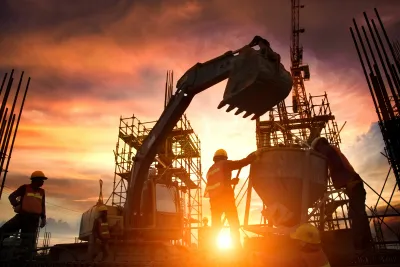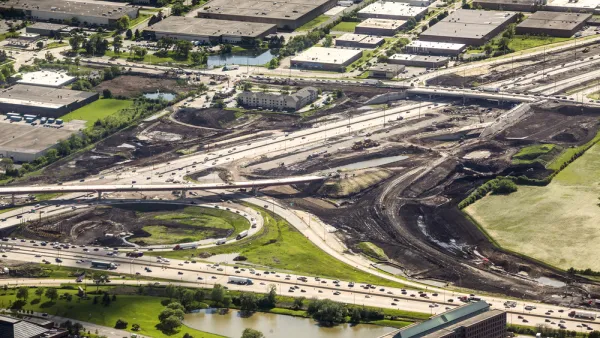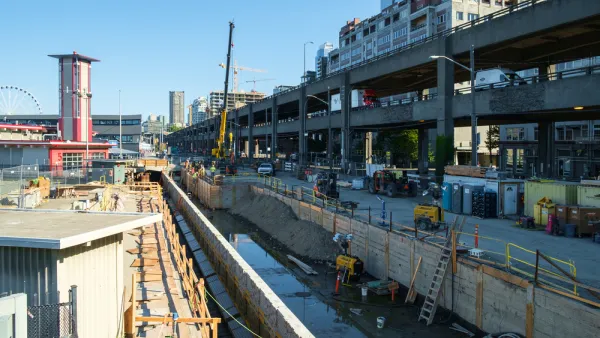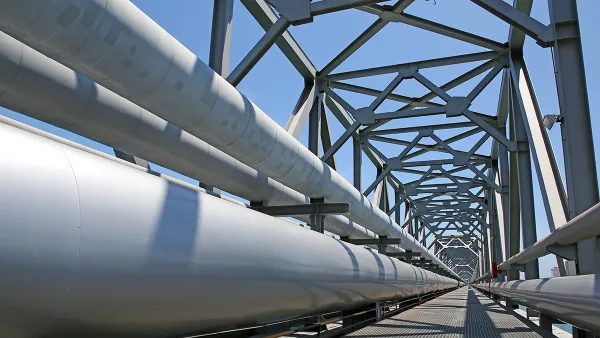From budget cuts to delayed maintenance projects, cities adapt, prioritize, and innovate amidst financial challenges to ensure sustainable and resilient urban environments.

Most discussions surrounding economic downturns revolve around the human impact. For example, news outlets examine how people wade through inflation or market crashes. City infrastructure also takes a hit, and people often overlook its importance in reflecting national conditions. It’s why governments shift to infrastructure funding to help instill a new normal.
What does infrastructure look like during a recession?
Investing in infrastructure during an economic downturn equates to job openings. Additionally, it catalyzes demand in numerous industries, from concrete to tech. Construction and engineering projects require people to transport materials and manufacture products related to the blueprints.
Funding infrastructure through legislation is one of the most sweeping actions that impact a significant web of sectors. These are some of the ways city and state governments might spur infrastructure regeneration:
- Upgraded or increased public transportation
- New bridges
- Added interstate or highway exits
- Widened roadways or added lanes
- Green infrastructure projects
- Smart city implementation and digital infrastructure, like increased cybersecurity
- Improved waterway structures like dams
Many times, infrastructure during a recession gets a revamp. Workers get new prospects and skills from boosting the economy through mobility, city services and eco-friendly routes.
What can’t infrastructure do?
Putting all of the government’s hope into infrastructure, however, is slightly misguided. Though it provides numerous benefits, it’s not the ultimate fail-safe. Governments, urban planners, and businesses should consider the economic cycle and plan their investments accordingly. These are the four main stages:
- Expansion: Signaled by growth, high demand and low interest with the potential for inciting inflation.
- Peak: Indicated by a brief stable period at the economy’s max height and efficiency.
- Contraction: Shown by decreased spending, employment and investments, which could lead to depression.
- Trough: Demonstrated when supply and demand plummet and spending is sparse. Citizens await recovery.
Right now, there appear to be some negative trends citing overall contraction, but experts suggest that the U.S. is far from a complete depression. Infrastructure spending could help avoid catastrophe.
Focusing on infrastructure without considering economic context could be a region’s downfall. Though infrastructure is highly resilient against these cyclical trends, the sector impacts numerous others, which are more vulnerable to changes during different periods.
For example, investing in infrastructure during a recession doesn’t assist leisure or retail sectors much, especially when these workers aren’t skilled in construction or areas related to infrastructure advancement. How would spending impact them during each phase of the economic cycle?
Does it impact infrastructure other than new builds?
Funding infrastructure isn’t always cosmetic in the way it manifests. It also focuses on maintenance and efficiency. Countless buildings in the nation are centuries old and desperately need retrofitting. These wastes of energy often lead to sector inadequacies like supply loss in manufacturing because of old machinery or loss of power in old transmission lines.
Whether the motivation is to better the planet or to improve bottom lines, infrastructure spending requires looking at the fine details and seeing how minimal improvements multiply over time to improve economic conditions even more.
It could aid nations striving to go greener and achieve decarbonization or electrification efforts in clean energy. Infrastructure spending could also provide more housing or arable land if demolition projects open more land and institute the right resources for communities. It might look like incorporating smart tech and artificial intelligence to gather information for data-driven solutions to efficiently inform future projects. The possibilities are endless, with a medley of byproducts other than the new tunnel or train.
Every $1 invested yield an average of $3.70 in return for the next two decades. It’s so effective because of the compounding benefits from new buildings, jobs and motivations for spending.
Infrastructure spending during a recession
At the end of a recession, citizens might see shining new bridges or enjoy less traffic on expanded and sturdy highways. An economic downturn provoking infrastructure spending offers more job opportunities than most governmental investments. It ignites spending again as households become more stable, making the economic cycle take an upward turn.
Though it’s not a complete solution and doesn’t help every sector equally, combined with other market and personal considerations, most citizens can benefit from boosted infrastructure, especially after the benefits reveal themselves.

Analysis: Cybertruck Fatality Rate Far Exceeds That of Ford Pinto
The Tesla Cybertruck was recalled seven times last year.

National Parks Layoffs Will Cause Communities to Lose Billions
Thousands of essential park workers were laid off this week, just before the busy spring break season.

Retro-silient?: America’s First “Eco-burb,” The Woodlands Turns 50
A master-planned community north of Houston offers lessons on green infrastructure and resilient design, but falls short of its founder’s lofty affordability and walkability goals.

Test News Post 1
This is a summary

Analysis: Cybertruck Fatality Rate Far Exceeds That of Ford Pinto
The Tesla Cybertruck was recalled seven times last year.

Test News Headline 46
Test for the image on the front page.
Urban Design for Planners 1: Software Tools
This six-course series explores essential urban design concepts using open source software and equips planners with the tools they need to participate fully in the urban design process.
Planning for Universal Design
Learn the tools for implementing Universal Design in planning regulations.
EMC Planning Group, Inc.
Planetizen
Planetizen
Mpact (formerly Rail~Volution)
Great Falls Development Authority, Inc.
HUDs Office of Policy Development and Research
NYU Wagner Graduate School of Public Service





























